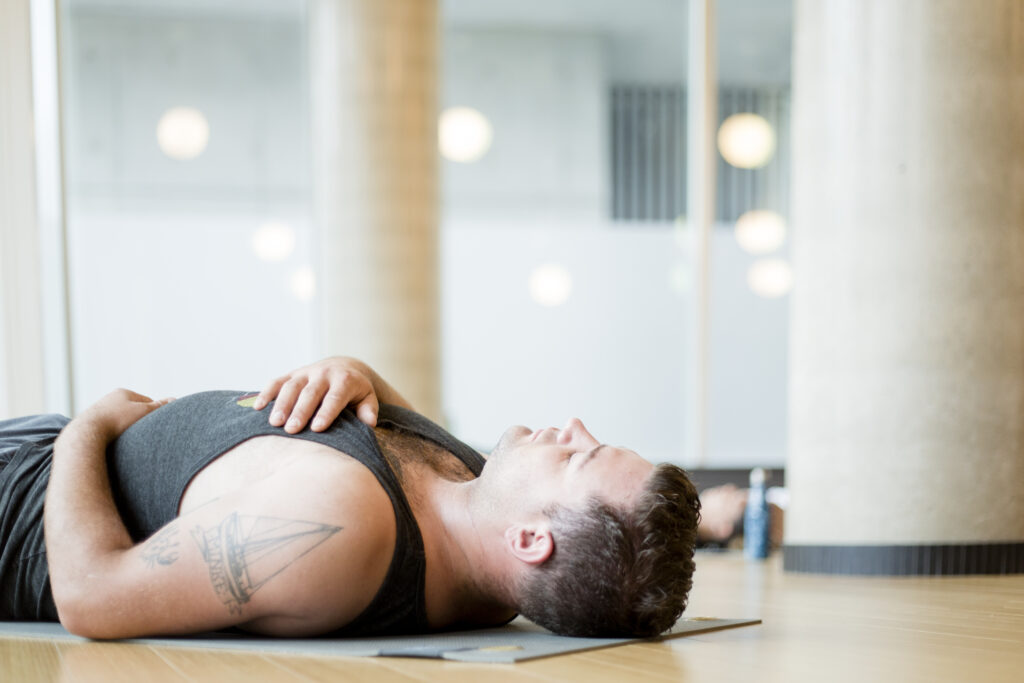
Over the past fifteen years, yoga has become a mainstream practice for physical fitness. Between 2012 and 2016, the number of Americans practicing yoga increased from 20.4 million to 36 million (2016 Yoga In America Study, 2016). As it has grown in popularity, yoga has become the object of many studies for its potential benefits on a wide range of health concerns, and shows promise in helping to manage both physical and mental health conditions. In addition to supporting physical strength and flexibility, yoga has been linked to improvements in conditions such as diabetes, eating disorders, and arthritis. Cognitively, yoga has been linked to improved body image, stress management, and improved mental function. In 2017, 14.3% of US adults reported using yoga as a complementary health approach (Clark, 2018). While studies suggest that further research is required, yoga shows promise in supporting medical methods of care.
About half of American yoga students cite flexibility as their motivation for beginning and maintaining their yoga practice (2016 Yoga In America Study, 2016), with good reason: clinical studies have shown that a consistent yoga practice can lead to marked improvements in flexibility as well as strength and endurance (Lau, 2015; Trans, 2014). The benefits of yoga are not restricted to one age group: studies have shown that yoga can help improve muscle tone and mobility for a wide age range of practitioners (Chatterjee, 2019). In addition to supporting general strength and flexibility, yoga practice has been linked to improvements in chronic back pain (Chang, 2016). As “up to 85% of the population can expect to experience at last some back pain in their lifetime,” yoga’s capacity to support back pain management with very little equipment and at minimal cost to the practitioner may be a welcome alternative for those seeking non-surgical interventions (McKivigan, 2017; Saragiotto, 2013).
For older practitioners, hatha yoga can help to offset age related deteriorations in physical health. Studies on older populations have shown that yoga can help increase spinal mobility, hamstring flexibility, and improve balance: all important components for maintaining independence and quality of life through the aging process (Grabara, 2015; Tiedemann, 2013). Some studies show promise that yoga may positively impact arthritis and rheumatoid arthritis (Wang, 2018; Sadana, 2018).

Of course, the benefits of the practice go far beyond the musculoskeletal system. Like meditation, yoga has been linked to stress reduction as well as decreased anxiety and depression. A consistent yoga practice can improve neurological pathways, induce anti-inflammatory effects, and increase stress resilience (Cahn, 2017). The use of yoga and mindfulness has been linked to a reduction in the fight or flight stress response as well as reduction in vagal tone (Stephens, 2019). In addition to helping practitioners manage stress and anxiety, medical yoga therapy has been proposed as a complementary resource for a range of mental health challenges such as anxiety, depression, ADHD, obsessive-compulsive disorder, chronic illness and high functioning autism (Stephens, 2019; Gerber, 2018). Insomnia – experience by nearly 33% of adult Americans – may also be improved through a consistent yoga practice (Kennedy, 2014). Preliminary studies suggest that yoga may help to improve working memory and cognition function (Brunner, 2017). While yoga may not replace medical intervention, it may be used as a complementary and holistic support to enhance well-being and health.
Preliminary studies suggest that a yoga practice may be used to help to address obesity and eating disorders (Rioux, 2013).The yoga practice, which is a body-based practice situated in a non-competitive environment, may help practitioners to connect to themselves and become more attuned to – and listen to – their physical needs (Ostermann, 2019). The cultivation of mindfulness can support the emotional self-regulation and cognitive control that helps practitioner to make better choices for their health and well-being. Yoga’s focus on mindfulness has prompted some researchers to speculate that yoga may be used to support diseases such as diabetes, in which developing coping strategies for food cravings may be beneficial (Bock, 2019).
Yoga helps to improve self-esteem. North American culture focuses heavily on bodily objectification; many women feel critical of their own physical appearance and have a negative self-image. Practicing yoga has been shown to positively impact self-esteem and help practitioners to become less self-objectified (Lauche, 2017). Bodily dissatisfaction is a factor in driving eating disorders, obesity, and depression; a regular yoga practice is associated with a higher level of bodily satisfaction, which can help stave off unhealthy eating patterns and help to bolster positive self-esteem (Ariel-Donges, 2019; Neumark-Sztainer, 2018).
Although the positive impact that yoga can have on mental health is relevant for everyone, it may be particularly important for younger practitioners. Suicide is the third leading cause of death for adolescents between the ages for 10 and 24, and up to 50% of teenagers complain of stress and anxiety. Yoga intervention can help provide stress relief, improve emotional regulation, and support resilience against bullying and social pressures (Stephens, 2019). Yoga can also support children and teenagers to practice mental focus, improve emotional self-regulation and develop self-confidence (Hagen, 2014; Wang, 2016).
In conclusion, the yoga practice shows great promise for helping practitioners of all ages embody greater physical and mental health. While yoga may not be able to replace medical intervention, it is a low-cost, widely available resource that requires very little investment or equipment and can work to holistically support a healthy lifestyle. With so many individuals grappling with obesity, stress, low self-esteem, anxiety and depression, yoga’s emergence as a natural health phenomenon could not have arrived at a better time.